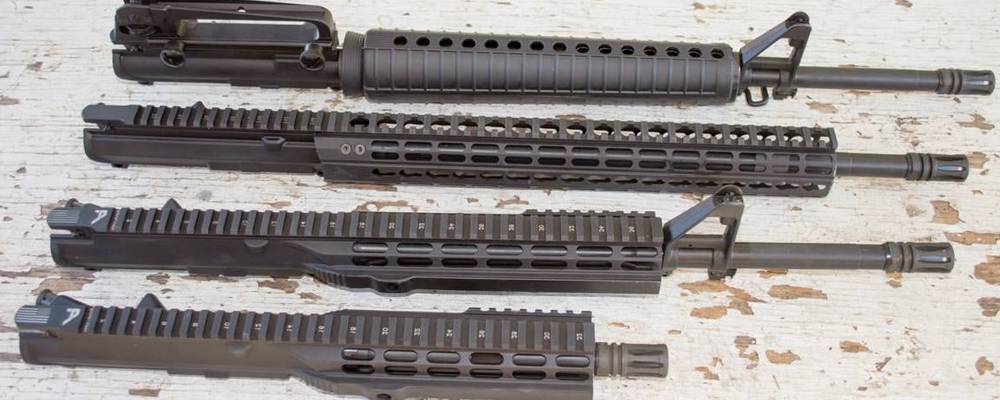|
The AR-15 rifle has become a cornerstone of firearm enthusiasts' collections and is renowned for its versatility, accuracy, and customizable features. One crucial aspect that plays a significant role in determining its performance is the length of the barrel. The barrel length of an AR-15 rifle can impact various factors, including velocity, accuracy, maneuverability, and the overall shooting experience. In this article, we delve into the considerations surrounding barrel length and help you understand the best barrel length for your AR-15 rifle.
|
 |
|
|
|
The Dynamics of Barrel Length
|
|
The barrel of a firearm is not merely a cylindrical tube that contains and directs the bullet's path; it is a complex system that interacts with the expanding gases produced by the ignited gunpowder, accelerating the bullet while also stabilizing its trajectory. The length of the barrel plays a critical role in this process.
When it comes to AR-15 rifles, the commonly available barrel lengths range from 7.5 to 20 inches, with various intermediate lengths in between. Each length has its advantages and drawbacks, and the best choice for you depends on your intended use for the rifle.
|
Velocity and Barrel Length
|
|
One of the most significant factors affected by barrel length is muzzle velocity—the speed at which a bullet leaves the barrel. Generally, longer barrels result in higher muzzle velocities due to the increased time the expanding gases have to exert pressure on the bullet.
However, this relationship between barrel length and velocity is not linear. After a certain point, increasing the barrel length might lead to diminishing returns in terms of velocity gains. This is due to the fact that the bullet eventually reaches its maximum velocity potential, and the additional length only adds weight and bulk to the rifle.
For an AR-15, a shorter barrel—around 10 to 16 inches—might sacrifice a bit of muzzle velocity compared to longer barrels, but it can offer better maneuverability and versatility in close-quarters situations. On the other hand, longer barrels, such as 18 to 20 inches, are often favored by those seeking maximum accuracy and long-range performance.
|
Accuracy and Barrel Length
|
|
Accuracy is a paramount consideration for any firearm, and barrel length has a role to play in this aspect as well. Longer barrels can contribute to enhanced accuracy due to several factors:
-
Increased Sight Radius: A longer barrel provides a longer sight radius, which can make it easier to align the sights and make precise shots.
-
Stabilization: Longer barrels can provide better stabilization to the bullet, reducing the effects of minor inconsistencies in bullet shape and weight.
-
Reduced Recoil: Longer barrels tend to distribute the recoil force over a larger area, leading to smoother shooting and potentially better accuracy.
It's important to note that while longer barrels can offer these accuracy benefits, they might not be as noticeable at shorter distances. For close to mid-range shooting, a slightly shorter barrel can still provide satisfactory accuracy without the added bulk.
|
Maneuverability and Barrel Length
|
|
The maneuverability of an AR-15 rifle is a crucial consideration, especially if you plan to use it in dynamic environments or for home defense. Shorter barrels excel in this area, as they are more compact and easier to handle in tight spaces. A rifle with a shorter barrel can be maneuvered quickly around corners and obstacles, making it well-suited for close-quarters engagements.
Longer barrels, while potentially offering superior accuracy and longer effective range, can be more cumbersome to handle in confined spaces. If your primary use for the AR-15 is home defense or situations that demand rapid movement and engagement, a shorter barrel might be the better choice.
|
|
|
Balancing Length and Purpose
|
|
The optimal barrel length for your AR-15 largely depends on your intended use for the rifle. Consider the following scenarios:
-
Home Defense: For home defense, a barrel length between 10 and 14 inches is often recommended. This strikes a balance between maneuverability and sufficient terminal performance in close-quarters situations.
-
Tactical and Law Enforcement: Tactical teams and law enforcement often opt for barrel lengths around 14 to 16 inches. This provides good accuracy for mid-range engagements while still maintaining maneuverability.
-
Precision Shooting: If precision shooting or long-range accuracy is your priority, longer barrels in the range of 18 to 20 inches are preferred. These lengths offer increased velocity and stability for more consistent shots at extended distances.
-
General Use: If your AR-15 will be used for a variety of purposes, a barrel length of 16 inches is a versatile choice. It strikes a balance between maneuverability and accuracy, making it suitable for a wide range of shooting scenarios.
|
|
|
|
Considerations Beyond Barrel Length
|
|
While barrel length is a crucial factor, it's important to remember that other components also impact the overall performance of your AR-15 rifle. Factors such as barrel material, rifling twist rate, ammunition selection, and optic quality can significantly influence accuracy, velocity, and overall shooting experience.
Additionally, legal regulations in your jurisdiction might impose restrictions on barrel length. Always ensure that you are in compliance with local laws before making any modifications to your firearm.
Selecting the best barrel length for your AR-15 rifle involves a careful balance between velocity, accuracy, maneuverability, and intended use. There is no one-size-fits-all answer, as each shooter's preferences and requirements differ. Whether you prioritize close-quarters maneuverability, long-range precision, or a versatile all-purpose rifle, understanding the dynamics of barrel length empowers you to make an informed decision. Before making any modifications to your AR-15, consider your shooting style, preferences, and the specific scenarios in which you plan to use your rifle.
|
|
|
|
|